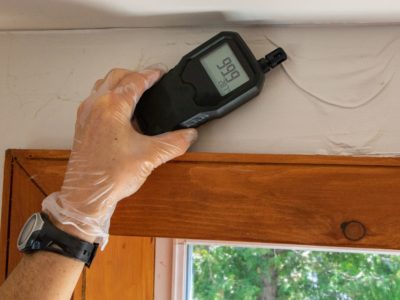Letting agents and landlords have a big part to play in making sure that updated fire safety regulations improve standards for tenants living in taller buildings.
Alongside full compliance, landlords and agents can ease tenants’ worries about fire safety by improving communication, according to specialist inventory provider, No Letting Go.
At the same time, the new regulations represent more work and increased costs for lettings professionals, who’ll need to find the most cost-effective way to incorporate their new responsibilities into existing processes.
Fire safety remains a significant issue for tenants living in taller buildings
Almost half of tenants living in leasehold properties – which are often blocks of flats or taller buildings – observed fire safety hazards, according to research published this year by construction software provider Zutec.
These issues included non-existent or faulty sprinkler systems, plus fire alarms or extinguishers and fire escapes being locked or blocked.
Fire safety issues contributed to almost two thirds of respondents claiming that they don’t feel 100% safe in their homes.
Although 90% of tenants said they know who to approach with any fire safety concerns, communication by ‘responsible persons’ is more of a problem.
Almost half (43%) said they haven’t seen any fire safety certificates in their building, while just a fifth felt they received ‘very quick’ responses when issues were raised.
“This year’s changes to fire safety regulations will mean compliance is front of mind for managing agents and landlords of residential rental buildings,” says Nick Lyons CEO of No Letting Go.
“However, it’s clear from the research that more needs to be done to communicate fire safety procedures to improve tenants’ confidence and make them feel safer at home.”
What are the new fire safety responsibilities for managing agents and landlords?
The Fire Safety (England) Regulations 2022 were launched in January 2023 and include a range of obligations for responsible persons, such as agents or landlords, for all multi-occupied residential buildings that are over 11 metres high.
These include completing annual checks of all apartment entrance doors that lead onto a building’s common parts (such as apartment front doors) and conducting quarterly checks of all fire doors in common parts.
There are also more stringent requirements for managers of high-rise residential buildings that are at least 18 metres high or have at least seven storeys.
These include installing a secure information box, providing up to date information to the local fire service, and carrying out monthly checks on lifts and firefighting equipment.
“It’s important for agents and landlords to get to grips with their new responsibilities, depending on the size of the building they manage,” says Lyons.
“Fire safety laws for high-rise buildings have quite rightly been bolstered, but there are a lot more things for responsible persons to be aware of to ensure tenants’ safety, remain compliant and avoid hefty fines.”
How can agents and landlords comply but keep costs down?
Incorporating additional fire safety checks into existing processes will inevitably increase costs for lettings professionals, although it’s an area in which they’ll be wary of taking shortcuts.
“We know of some building managers who are just doing risk assessments, which isn’t enough to comply, while others are using specialist fire safety companies which can be expensive,” Lyons explains.
“One cost-effective but fully compliant solution is to incorporate new fire safety responsibilities into existing property reports.”
“For example, No Letting Go now includes fire door compliance checks in its inventory, property visits and check out reports.”
These checks include five-point fire door checks, block inspections, emergency light and lift testing, plus smoke and carbon monoxide alarm tests.
“By working with an independent professional to incorporate these new responsibilities into their existing processes, agents and landlords can have peace of mind that they’re compliant with the law and protecting their tenants.
They can do this without creating additional layers of work at an increased cost,” Lyons concludes.
“This can allow them to focus on property management and improving communication of the steps they’re taking to make sure their buildings are fire safe for tenants.”























Comments